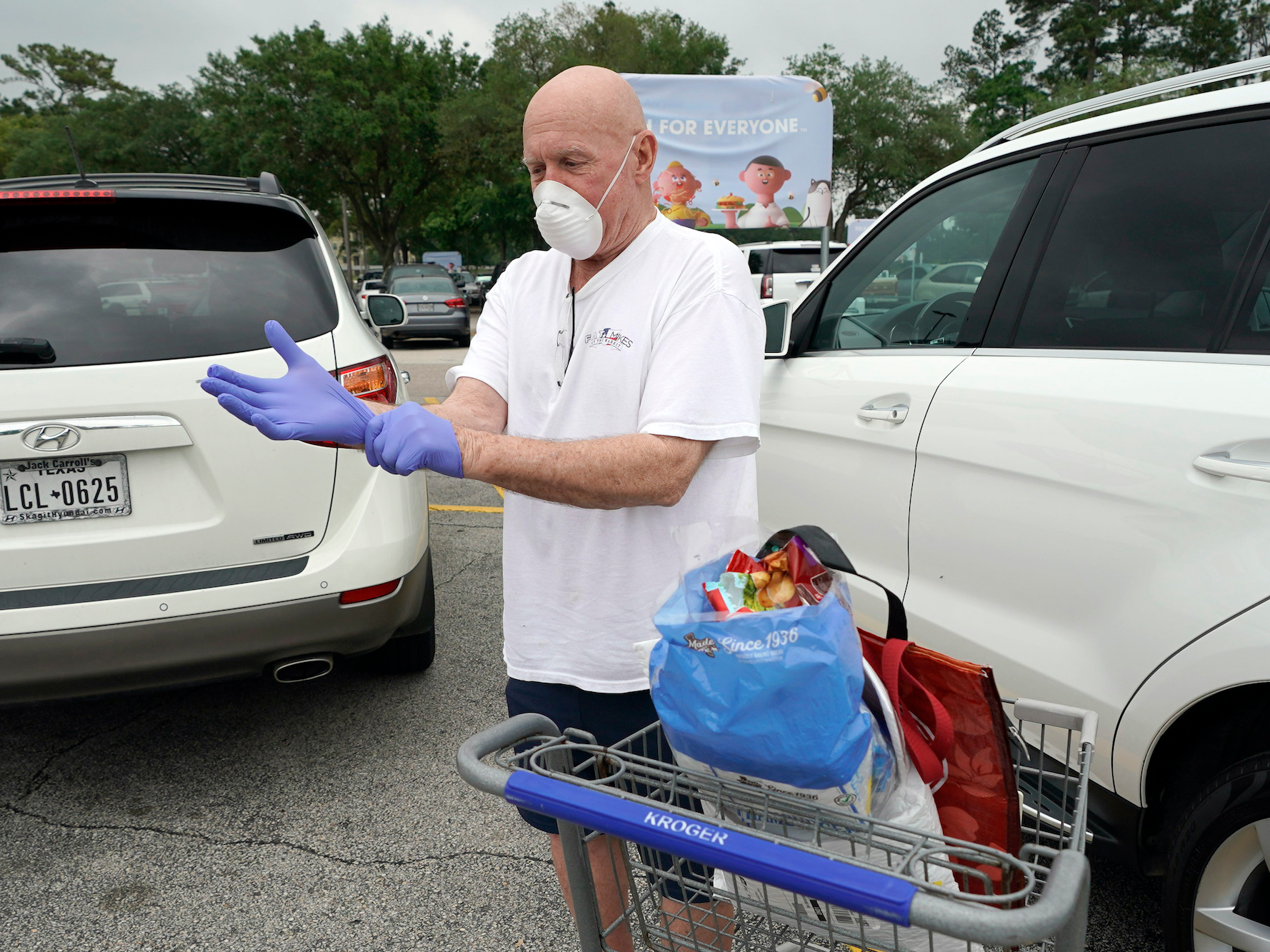- Shops, restaurants, salons, gyms, and even bowling alleys are opening across the US as states loosen their shelter-in-place orders.
- Experts say it’s important to realize that returning to businesses can still be risky and that answers about safety aren’t black and white.
- You can determine risk by weighing factors such as whether you can stay 6 feet away from others, whether everyone is wearing masks, and what the prevalence of COVID-19 is in your area.
- Different types of businesses come with different risks, meaning that concerns about returning to restaurants, stores, salons, and gyms need to be examined both separately and together.
- Visit Business Insider’s homepage for more stories.
As businesses reopen across America, many people are confused about what exactly is safe and what isn’t.
Experts say that just because restaurants, stores, and even nail salons are open does not necessarily mean they’re safe to visit. Instead, it means that people can choose whether they want to take the risk of returning.
“The one thing we do know is the virus is still out there,” said Celeste Monforton, a lecturer in public health at Texas State University. “When some governor said, ‘May 1, we’re opening things up,’ it’s not like the virus had a calendar and said, ‘OK, I’m going underground again.'”
Monforton and Dr. Jaimie Meyer, an assistant professor of medicine at the Yale School of Medicine, told Business Insider that they understood why people were confused, as the Centers for Disease Control and Prevention, the White House, and state governments had released different and sometimes conflicting guidelines.

Both Meyer and Monforton said they also understood the economic argument for businesses to reopen. And neither believes that everyone should avoid all businesses all the time.
"I almost would never say anything in absolute, because I think when you say things like that, people just tune out," Meyer said. "It's too hard for people to lose that much control over their lives."
However, Meyer said people should be aware of COVID-19 cases and the risk of infection in their communities, not only whether it's legal for businesses to reopen. While different people have different risk tolerances, Meyer said she was advising family and friends to err on the side of caution.
"There are so many unknowns here," Meyer said. "Everything that I do, I ask myself: If I got sick from doing this, was it really worth it?"
Certain factors can help determine whether a business is safe
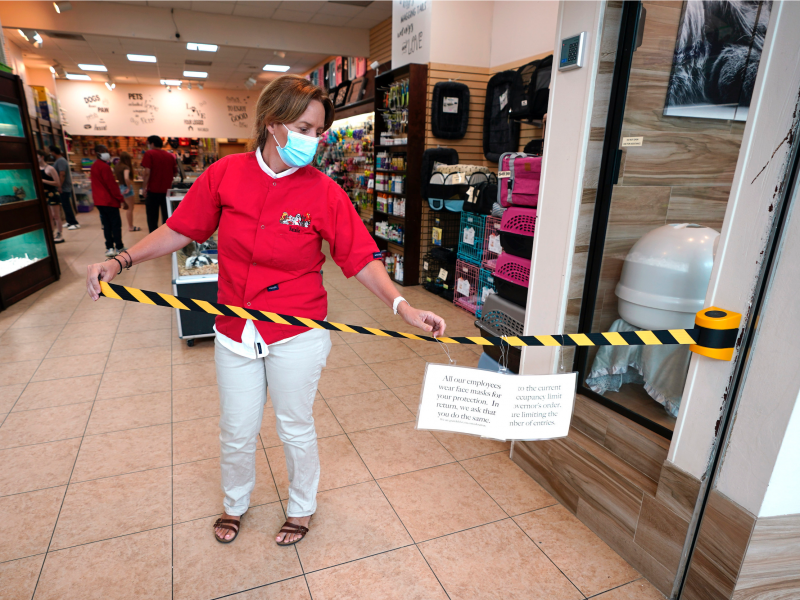
As states reopen, experts say, the risks exist on a spectrum.
Meyer and Monforton resisted saying that any type of business was definitively riskier than others. For example, a bowling alley where there is constant cleaning and social distancing could be safer than a grocery store that hasn't added safety measures since the pandemic.
Instead, there are a few big-picture questions you can ask yourself to determine whether a business is safer - though not 100% risk-free - to visit.
Questions that can help determine how risky it is to visit a business include:
- Can you stay at least 6 feet away from other people in the space?
- Is everyone wearing masks? (Wearing a mask doesn't necessarily prevent someone from catching the coronavirus, but it reduces the likelihood that they will spread it.)
- Can you stay outside or minimize your time indoors?
- Are workers regularly cleaning the space?
- Are employees and customers able to wash their hands?
- Have the number of COVID-19 cases in your community decreased over the past two weeks?
- Is there limited community spread of the coronavirus in your area?
If you can answer yes to all of these questions, there is less of a risk of catching the coronavirus, whether you're considering visiting a restaurant or a mall.
You can also take steps, such as washing your hands and wearing a mask, to make your community safer, even when businesses and governments do not require them.
Waiting a few more weeks to go shopping or get your nails done could also help everyone understand the situation better
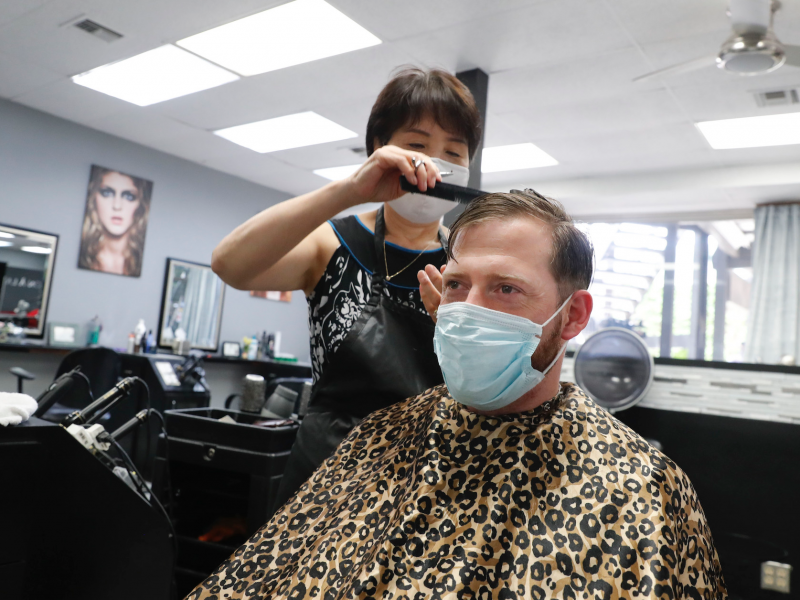
Meyer said she was encouraging people to behave as if everyone in public is infected with the coronavirus and to act accordingly: Maintain 6 feet of distance, wear a mask, and wash your hands regularly if you're leaving your house.
"If you don't practice social distancing and handwashing and wear masks, we're going to experience a major setback, and there will be a second wave," Meyer said.
Still, planning to stay inside for 18 months is a daunting idea.
Monforton said she was encouraging people to take things week by week. Every week, scientists and healthcare professionals find out more about the coronavirus and COVID-19. Even one extra week's worth of knowledge can help customers and business owners make better decisions as states reopen.
"We're going to learn a lot in the next couple of weeks, and that's going to be continuing to inform people about the risk - whether the risk is higher than we expected when things opened up [or] less than we expected," Monforton said.
Older people and people with preexisting conditions should take more steps to reduce their risk, avoiding activities that people with a higher tolerance for risk may be willing to participate in. Everyone should understand that when they make a nonessential trip to a store, restaurant, or gym, it might not affect only them - if they haven't been tested recently, they could unknowingly spread the coronavirus in their community as an asymptomatic carrier.
While no specific type of business is necessarily riskier or safer than others, we already know that each category carries different types of risks.
Here's a breakdown of some of the risks that come with different types of businesses, as well as some ways a risky situation can become safer.
Restaurants can be risky, but there are ways to support your favorite spot without endangering yourself
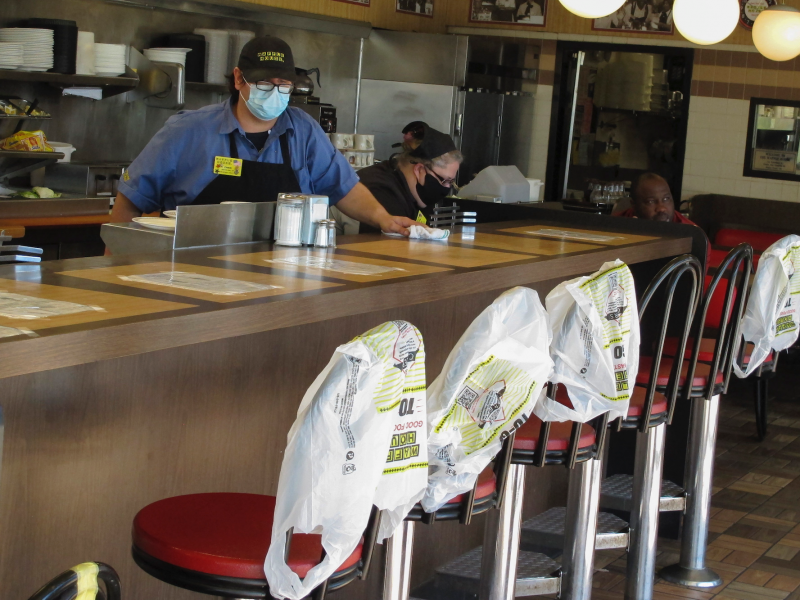
The good news for restaurants is that experts have said that even if a worker coughs or sneezes directly in your food, you won't catch the coronavirus from eating a meal.
The bad news is that customers crowding into a restaurant or bar could put everyone at risk of catching the coronavirus. Social distancing can be difficult for workers in kitchens, and many restaurants will not be able to maintain the necessary distance while bringing in as many customers as before the pandemic.
The National Restaurant Association has extensive guidance on how restaurants can reopen relatively safely.
These adjustments could make restaurants safer:
- Serving food via a drive-thru, takeout, or delivery.
- Adding more sidewalk- and curbside-pickup options.
- Adding outdoor dining.
- Reducing the number of tables.
- Requiring reservations to limit the number of customers.
- Training staff members to monitor for symptoms.
Shopping malls and stores will need to limit how many people are allowed in

Monforton said she expected stores of all types to follow grocers' blueprints. Even if Macy's is selling dresses instead of shoes, things like barriers, new cleaning routines, and hand-sanitizing stations will transfer over.
Malls create different issues, as customers are likely to visit several stores during one trip. This can make it more difficult to limit how many people enter a store, something that's crucial for social distancing.
Ultimately, the biggest difference between essential and nonessential stores is what they're selling, not their risk levels. Meyer said she was encouraging friends and family to avoid unnecessary risks, such as shopping for nonessential items. But retailers are trying to accommodate people willing to take the risks associated with any type of shopping trip.
The National Retail Federation has a full guide for what stores should do to reopen.
Here are some changes that stores could make to become safer to visit:
- Limiting how many people are allowed inside.
- Promoting "contactless" shopping, such as self-checkout and curbside pickup.
- Barring people from testing beauty products (unless they're using single-use testers).
- Stopping services such as alterations and ear piercing.
Risks associated with working out make gyms and fitness centers especially dangerous

Meyer said that as businesses reopen, people should be "especially cautious" at gyms, fitness centers, and other places where people work out.
"When people are working out and breathing hard, they are more likely to transmit droplets," which could spread the coronavirus, Meyer said. This makes cleaning and social distancing even more important.
If you're willing to take the risk of returning to work out, make sure that you can stay at least 6 feet away from other people and that the business has a strict cleaning schedule.
How fitness studios and gyms could make things safer:
- Offering virtual classes instead of having people attend in person.
- Limiting the size of classes or providing one-on-one classes.
- Offering outdoor workouts.
- Taking people's temperatures and making sure they don't have symptoms before they enter a studio or gym.
- Having people bring their own equipment, such as yoga mats and weights.
- Requiring people to wear masks while working out.
Salons and barbershops make social distancing difficult
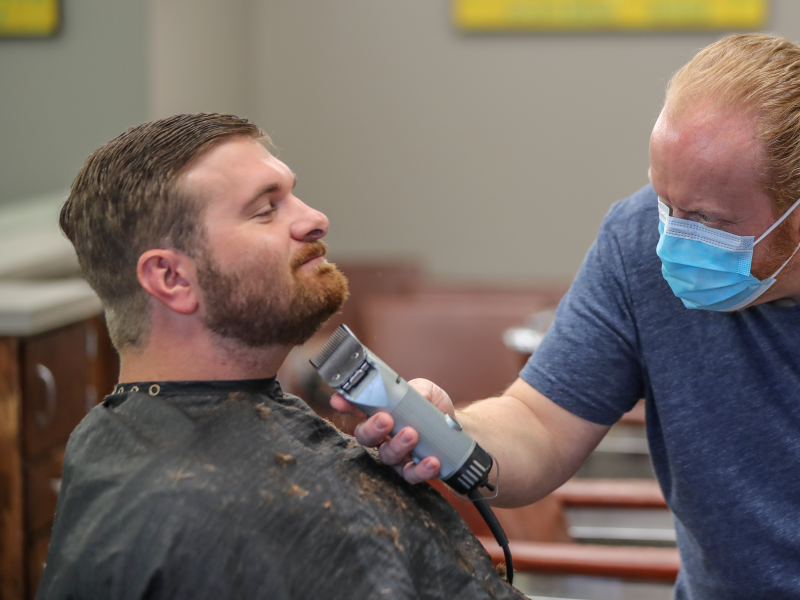
One of the biggest risks associated with barbershops and hair and nail salons is that the nature of cutting someone's hair or doing their nails makes it impossible to keep 6 feet in between people.
"If you're one of these high-risk individuals ... it's probably not safe yet," even with changes, Meyer said.
The American Industrial Hygiene Association acknowledged in its guidelines for reopening that nail and hair salons had been "very challenged" during the pandemic.
A few ways salons and barbershops could make things safer:
- Disinfecting between visitors.
- Limiting how many people are inside the salon or shop at one time.
- Ensuring that employees and customers wear masks and gloves.
- Closing reception areas and having people wait outside until their appointment.
Bowling alleys, arcades, and other interactive indoor spaces are extremely risky
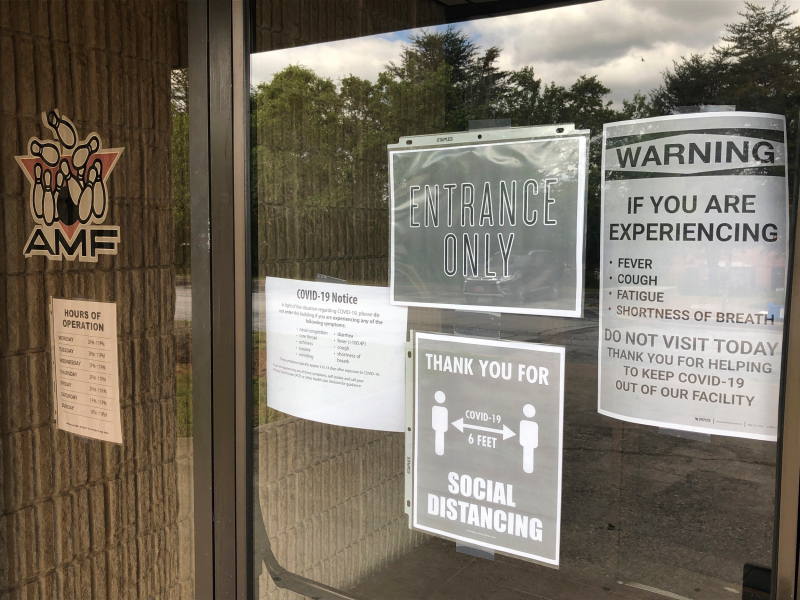
Georgia's decision to allow bowling alleys to reopen raised some eyebrows.
"Entertainment is important, and, for many people, perhaps bowling alleys are very important entertainment," Meyer said.
However, Meyer continued, the problem with bowling alleys, arcades, and similar businesses is that they are closed in and high-touch.
In a bowling alley, you're in an enclosed space with other people for a significant period of time, which is risky in and of itself. You're also touching things that a lot of other people are touching. It's basically impossible to sanitize items like bowling balls every time they touch people's hands or other potentially contaminated spaces.
At this point, places like bowling alleys - as well as anywhere with crowds - are high on the list of places to stay away from if you want to avoid catching COVID-19.
Bowling alleys are never going to be the safest choice, but here's how they could be safer:
- Ensuring constant sanitation.
- Making people bring their own balls.
- Having people wear masks.
- Requiring people to stay 6 feet away from each other.
Are you an employee at a company that is reopening and have a story to share? Email [email protected].
